Common Evening Primrose (Oenothera biennis) of the Evening Primrose (Onagraceae) family is a large edible plant noted for its historic and current-day medicinal uses. The genus name is believed to be based on Greek words for “wine” (oinos) and “seeker” (thera). The specific epithet refers to the plant’s typical biennial life cycle, but plants may also be winter-annuals. Occurrence is widespread across the eastern half of the U.S. along with scattered occurrences across the remainder of the U.S. Native to eastern North America, it has been introduced into many temperate and subtropical areas around the world. In Arkansas, occurrence is statewide. Preferred habitats are sunny sites with dry to mesic sandy soils in prairies, glades, rights-of-way and disturbed land.

Winter-annual plants have branched taproots while biennial plants have carrot-like taproots*. Early in their first growth-year, biennials and winter-annual plants, have a rosette of basal leaves. Basal leaves, to 4-8 inches long and 2 inches wide, have off-set pinnate venation. Basal leaves, all with short to long petioles, are medium green to reddish (in cold temperatures) with white midribs. Tapering leaf bases extend onto petioles. Margins are mostly entire but, later, may show marginal features of stem (cauline) leaves – – see below. The elliptic basal leaves of winter-annuals drop off with stem growth. Early basal leaves of biennial plants are also elliptic but become long-spatulate to long-lanceolate during the first growth-year and remain until stem growth in the following spring.
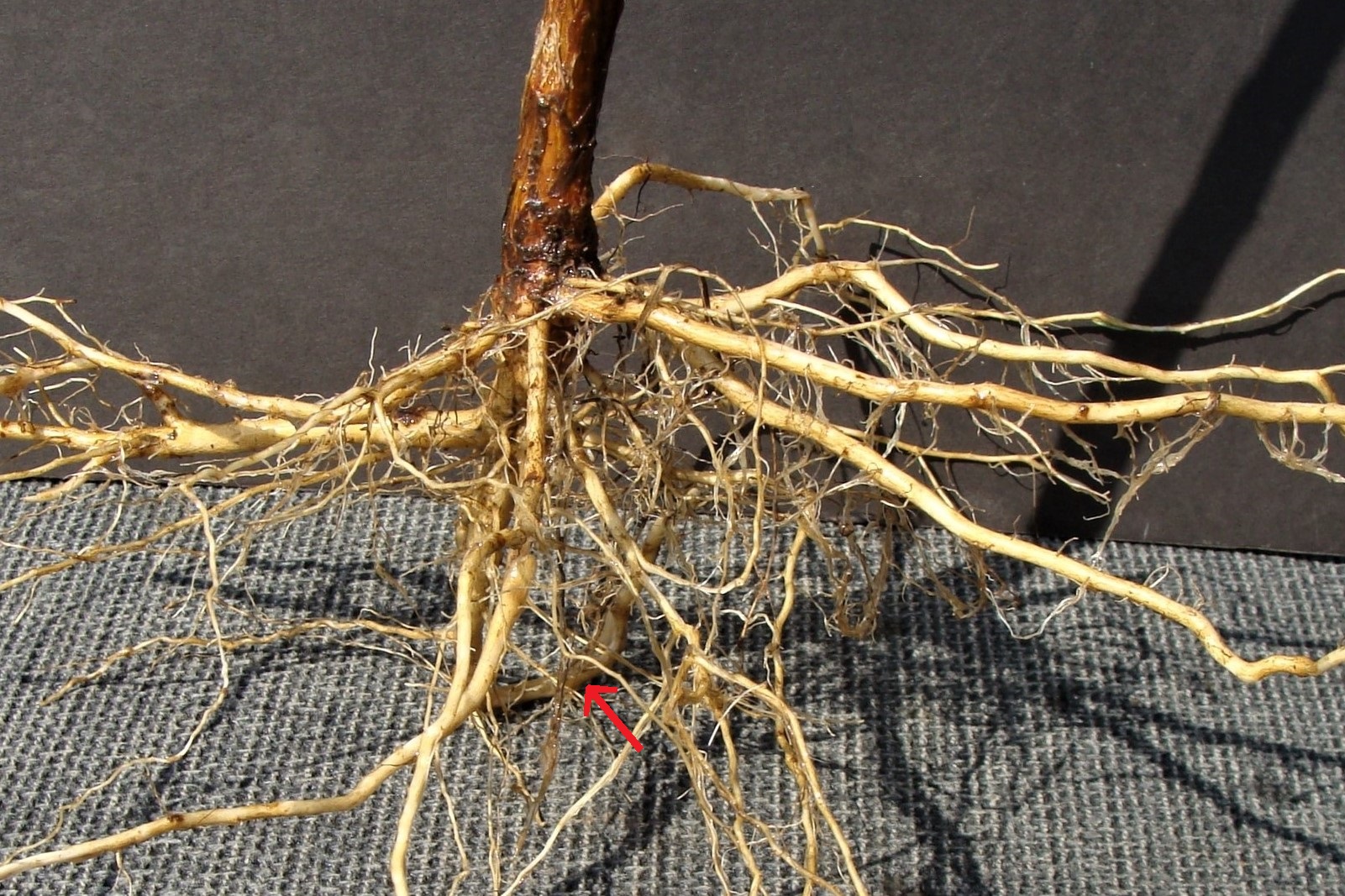
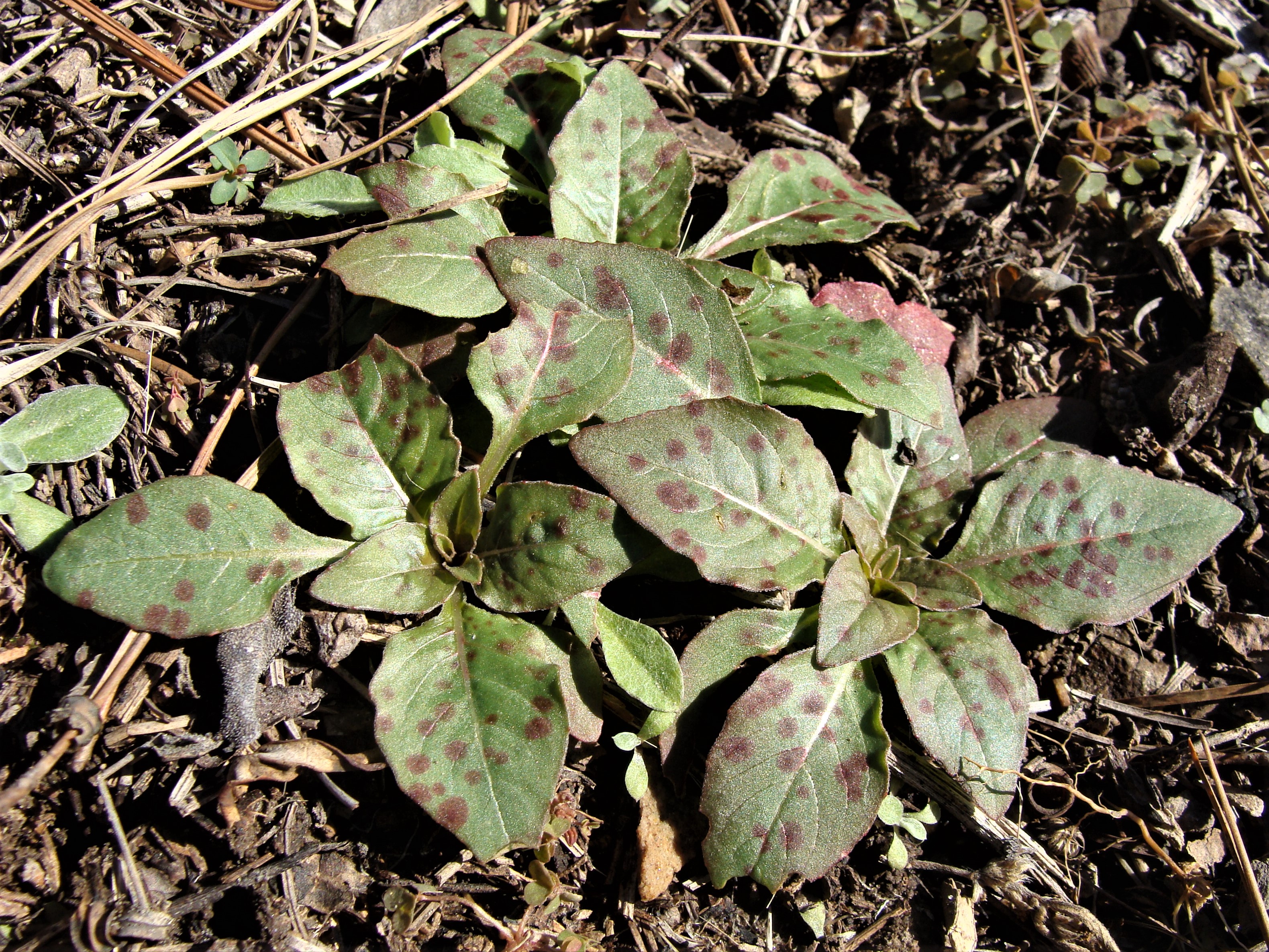
Cauline leaves, oblanceolate to lanceolate, are to 5¼ inches long (including ½ inch petiole) and 1¼ inches wide. Leaves are arranged spirally on a terete stem. Firm leaf blades, fabric fairly flat to rumpled, are slightly ascending and slightly up-folded along midrib. To varying degree, tapering blade-bases extend onto petioles. Off-set pinnate veins, rather obscure above and prominent below, extend to near leaf margin where they align with one another and continue toward leaf apex. Upper and lower leaf surfaces have puberulent pubescence with that of the underside being denser. Upper sides of leaves are medium green while lower sides are a fuzzy-looking light green with midribs and petioles being a pale green. Margins of smaller leaves are entire while those of larger leaves are shallowly toothed to undulating with the teeth being blunt. Axillary buds that do not develop into branches often appear as very short stems with a few miniature leaves. With drying soils, lower cauline leaves drop off and upper leaves wilt until revived with renewed moisture.
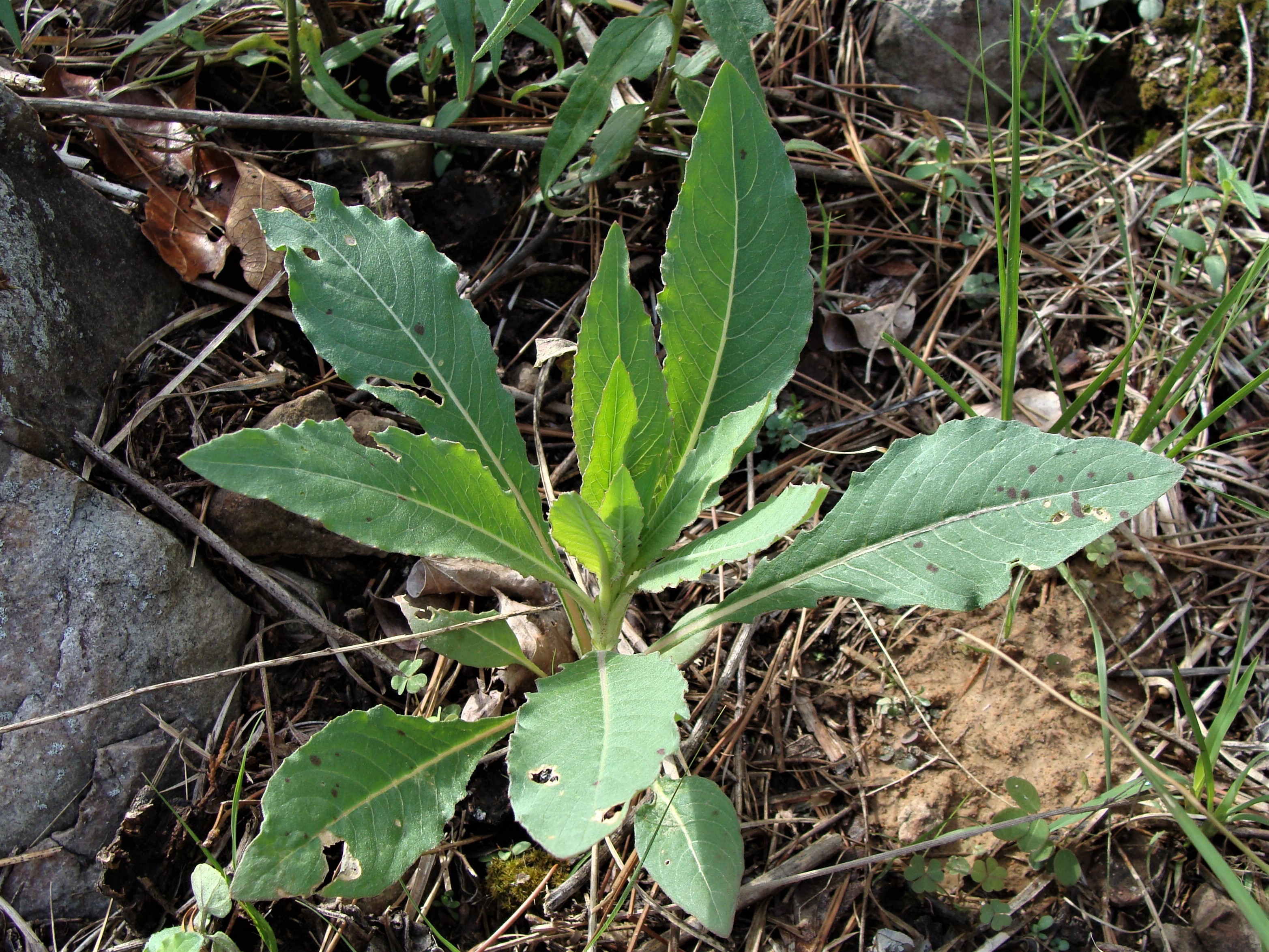
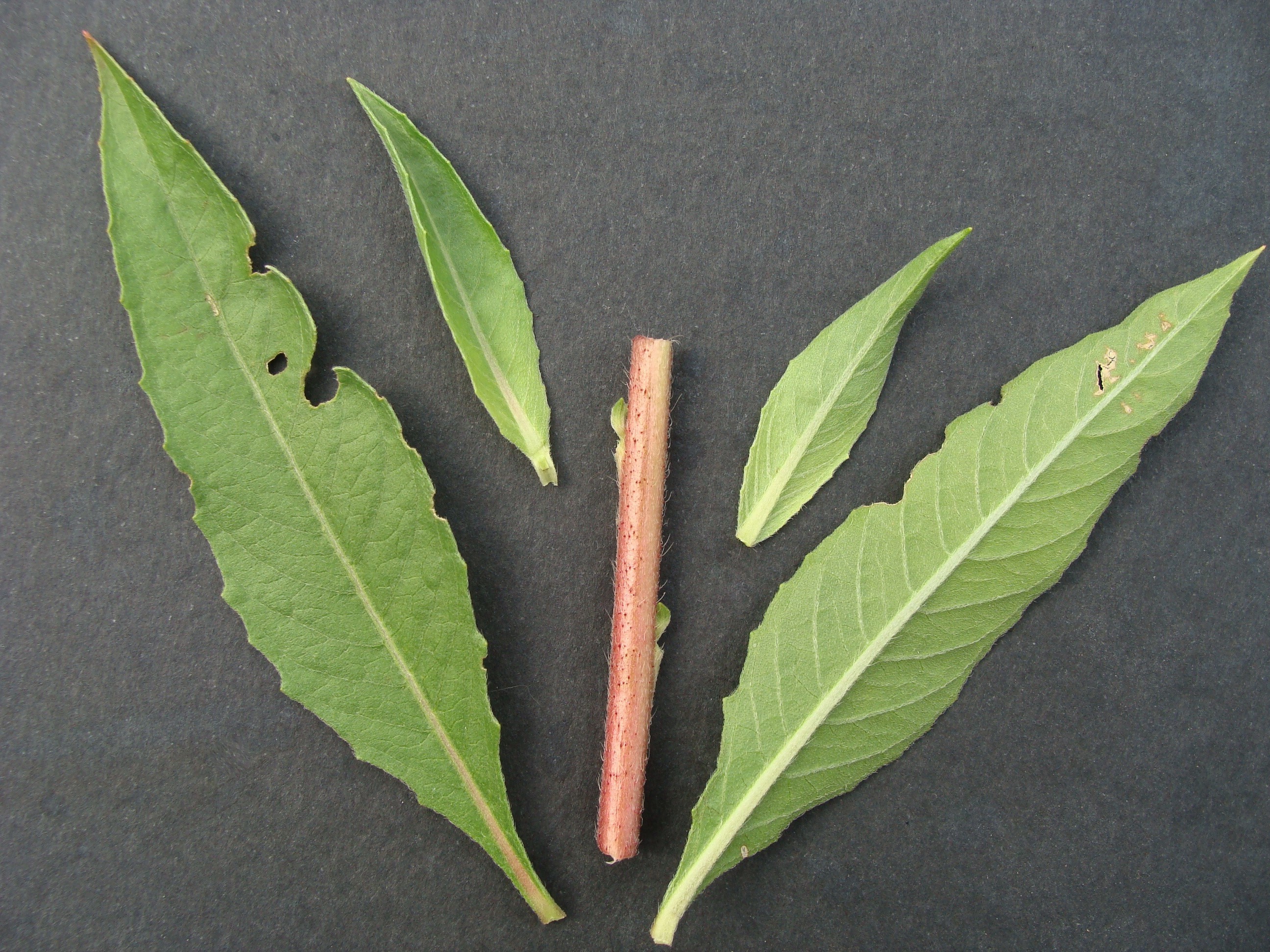
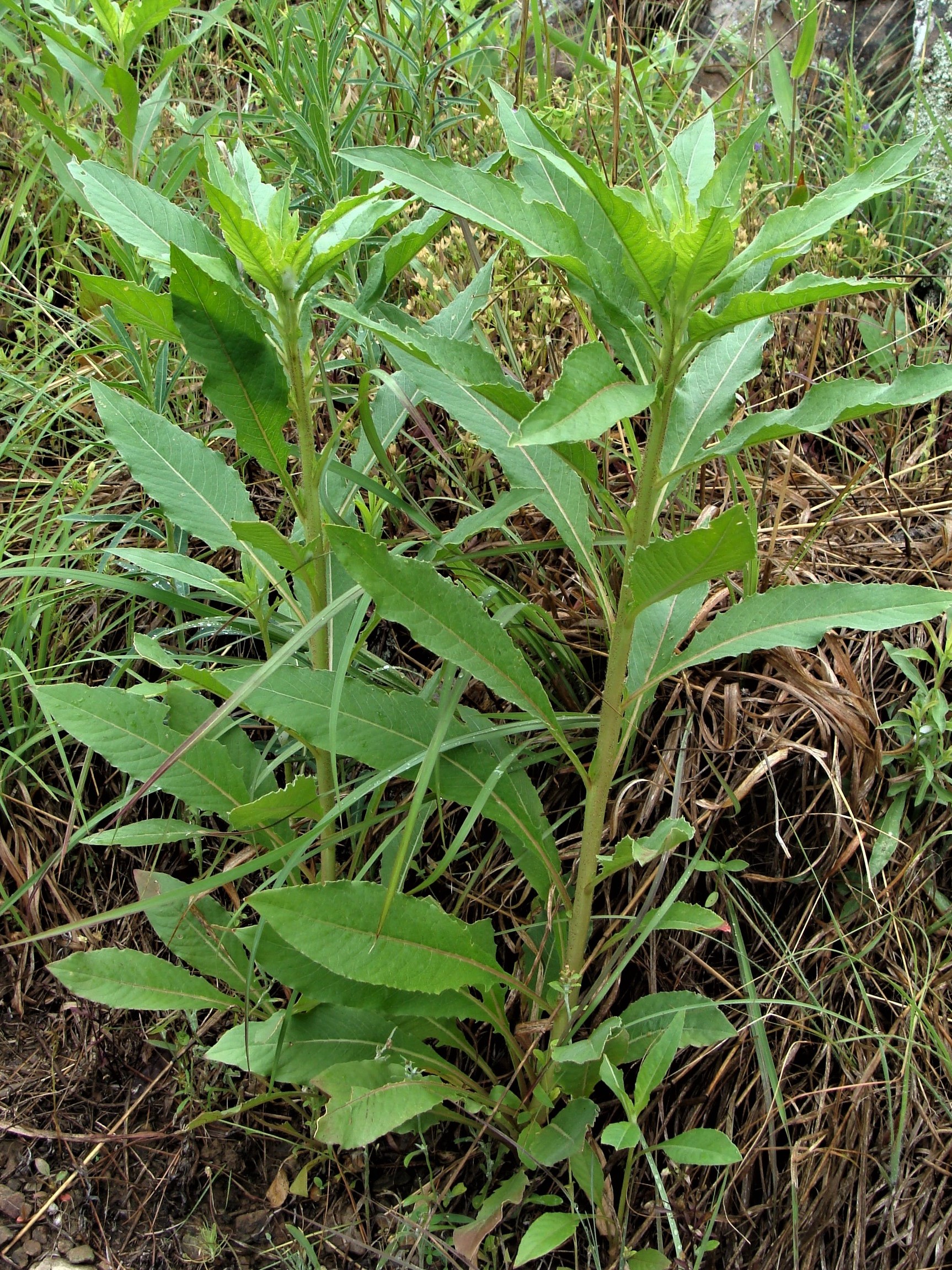
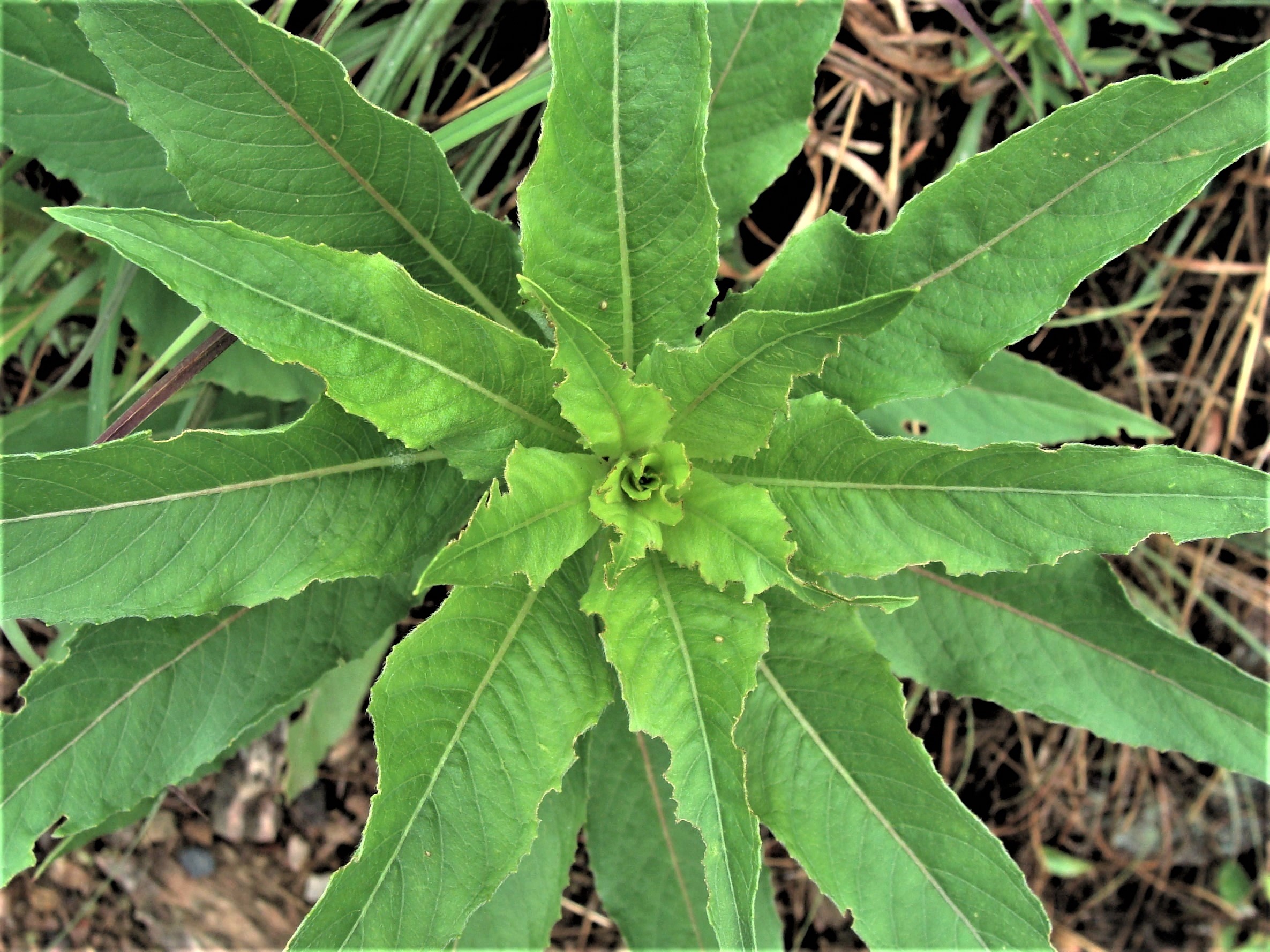

Stems, 3-6 feet tall with a base diameter of ½+ inches, may lack branches or, for more robust plants, have several to a half-dozen lower to mid-stem “primary branches” that are to 3+ feet long. Additionally, shorter branches, to 1 foot long, may occur along the distal portions of stems and primary branches. The terete, straight, solid-core, rigid stems and strongly ascending primary branches are initially pale green, becoming reddish-purple. Lower portions of stems and primary branches become tan to brown with the epidermis of more proximal portions splitting and exfoliating to varying degrees. Stems and branches are variously hairy with a dense mix of long hairs, hairs with reddish glandular bases (pustules) and short appressed hairs.

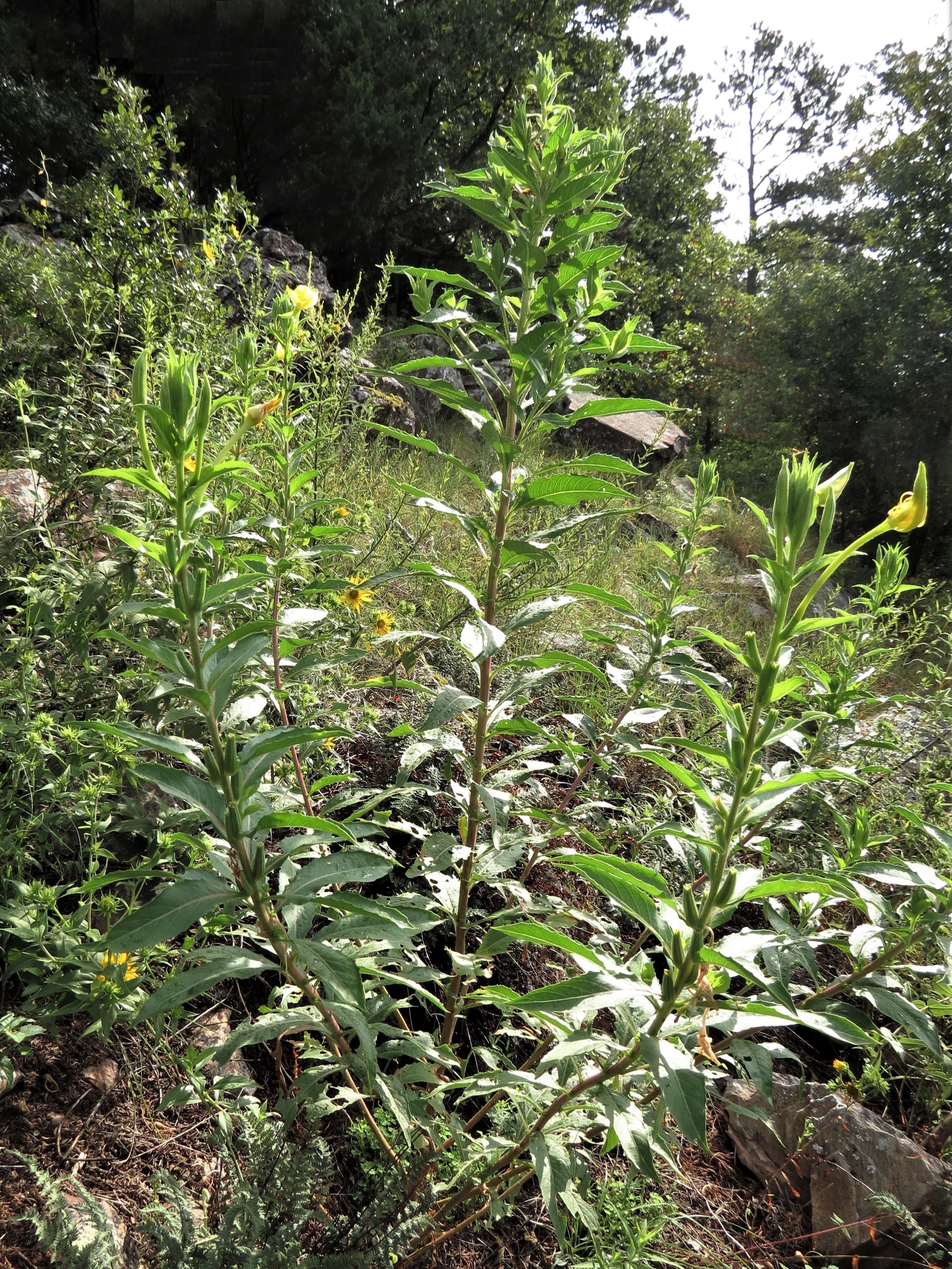
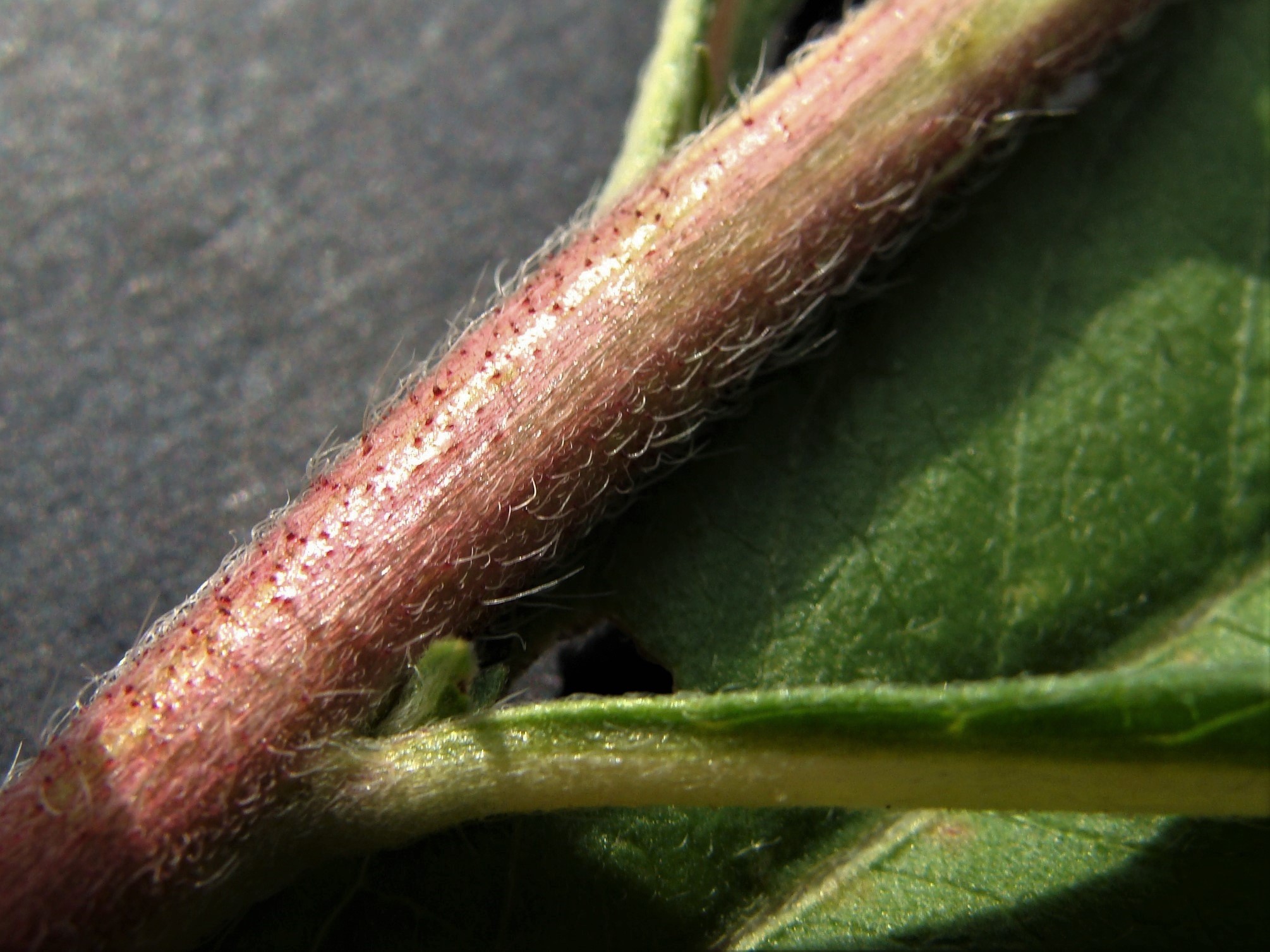

The inflorescence consists of stout, erect, terminal spikes of axillary yellow flowers – – 1 flower per leaf axil. Flowers of biennial plants are in bloom in early spring of their second growth-year while those of annual plants are in bloom in mid-summer of their first (and only) growth-year. Flowering proceeds up-spike, with several flowers of a stem or branch in bloom at the same time so that bloom period extends for a month or more. The sessile flowers, arranged spirally, are longer than the internode separation (⅛ to ½ inch apart).
The erect flowers have 4 sepals, 4 petals, 8 stamens (filaments + anthers), a pistil (ovary + style + stigma) and a slender floral tube to 2¼ inches long. Sepals, ½ to 1¼ inches long, are lanceolate with free-standing, blunt tips. With anthesis, sepals spread open along their sides while remaining connected at their apexes before strongly reflexing against the floral tube. Often, several sepals remain connected at their apices. Greenish yellow sepals rim the greenish yellow floral tube. Bowl-shaped petals are broadly cordate with a slightly notched apex and a broadened, tapering base. Petals attach to the tube at the base of the sepals. Flowers, 1-2 inches in diameter, have faint (to humans) nectar guides and a slight lemon scent. The sturdy yellow filaments (⅞ inch long), undulating in uniform fashion to either side of the style/stigma, bear an elongate 2-lobed anther divided across tips of filaments; filaments also attached to the rim of the floral tube. The pistil consists of an exposed elongate ovary, a very long style (to 2¾ inches) and a stigma with 4 wide-spread cylindric lobes, each lobe to ¼ inch long. Exteriors (undersides) of lobes are covered by stigmatic surfaces and feel sticky. Light yellow pollen grains are loosely connected by strands of viscin – aiding pollen transfer by insects. Stamens and stigma do not extend beyond the rim of the corolla but, with the bowl-shaped corolla, are easily accessible to insects. Depending on and varying with weather conditions, the bright yellow flowers usually open in the evening and close the next morning.
While the corolla, stamens and pistils are glabrous; the floral tube and sepals have pubescence. Exterior of the floral tube has a mix of short appressed hairs and scattered longer, ascending hairs while the interior has dense, short pubescence. Exteriors of sepals are densely covered with appressed, equal length, puberulent pubescence while the interiors are glabrous.
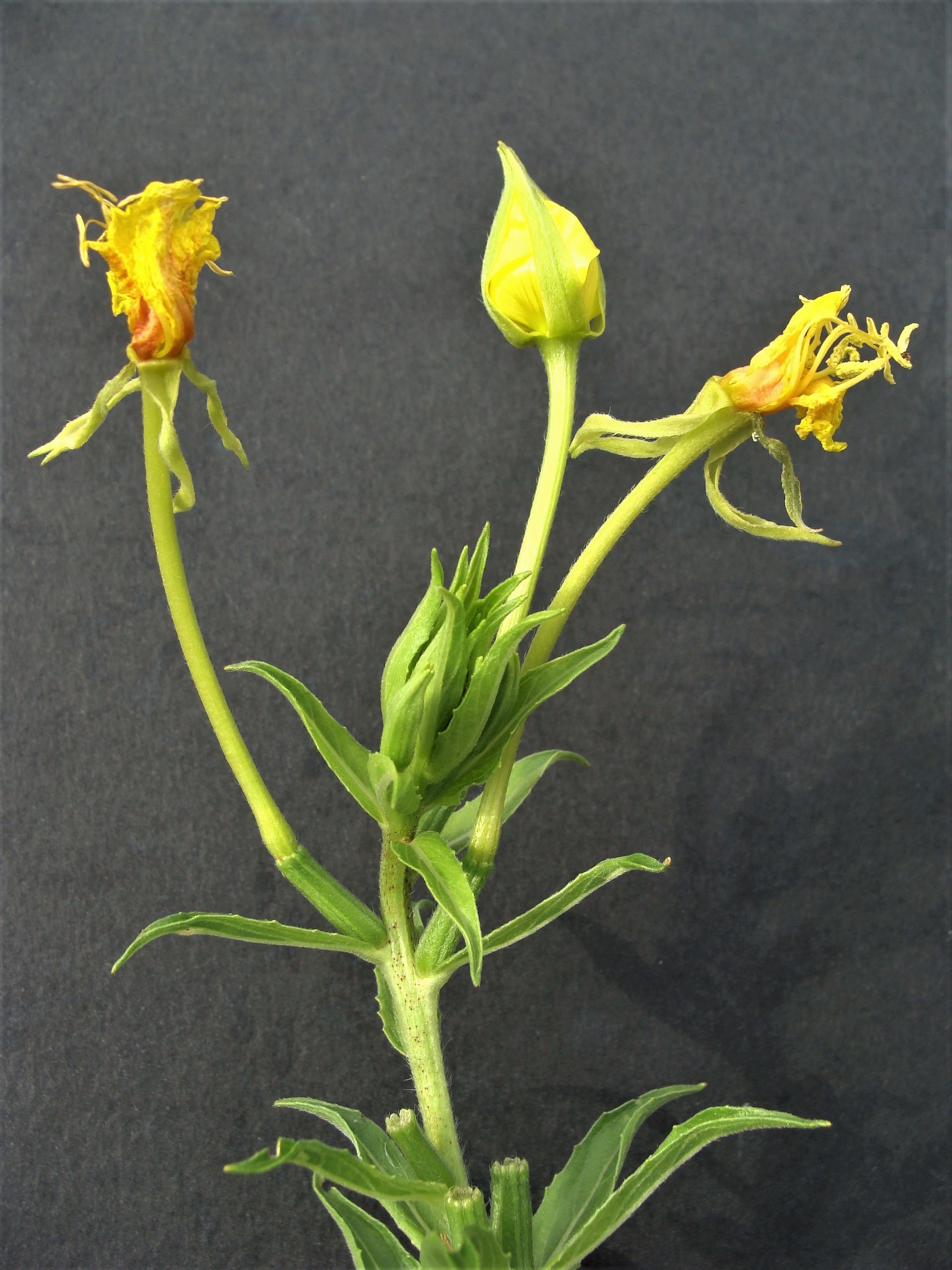
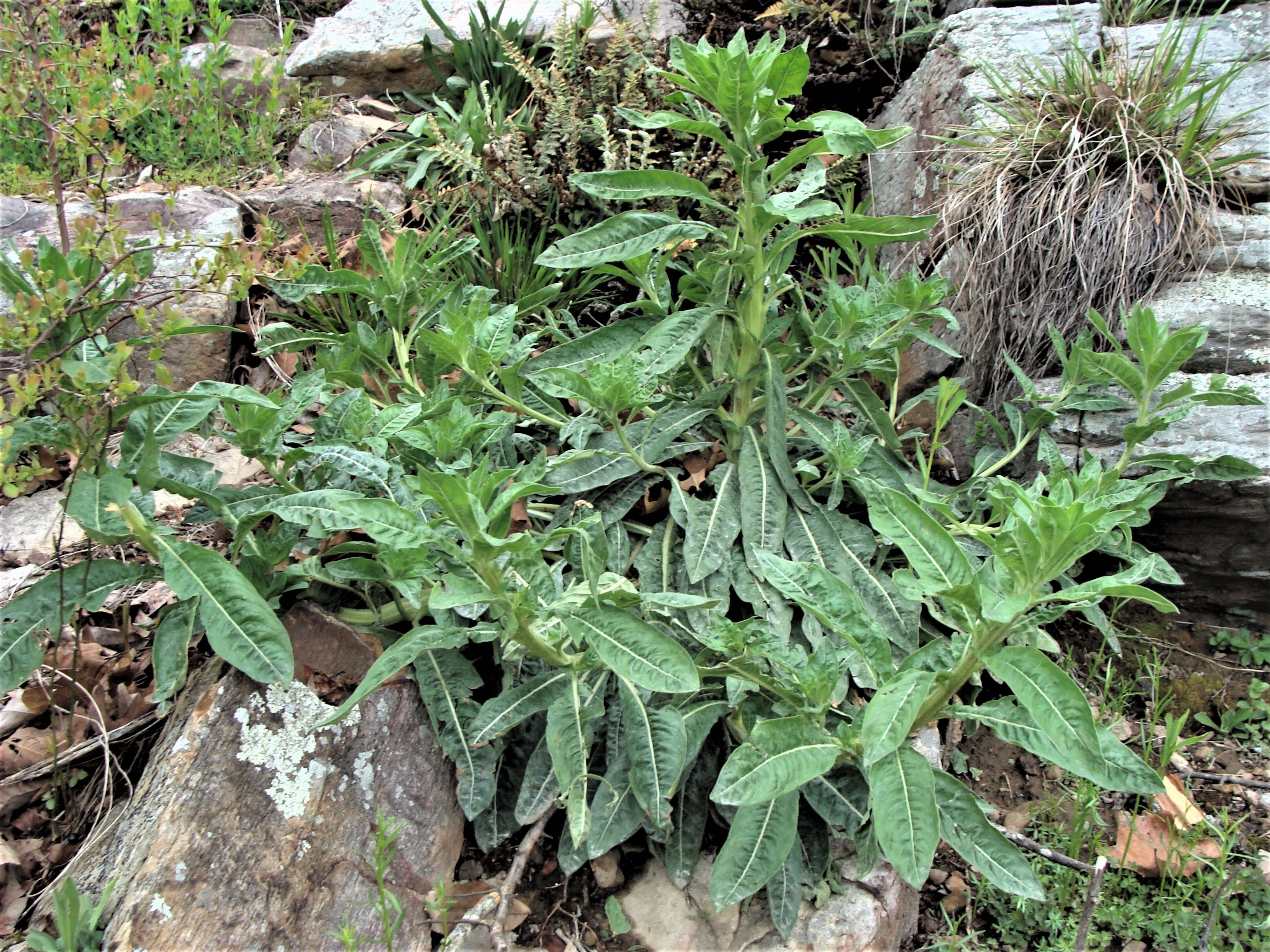

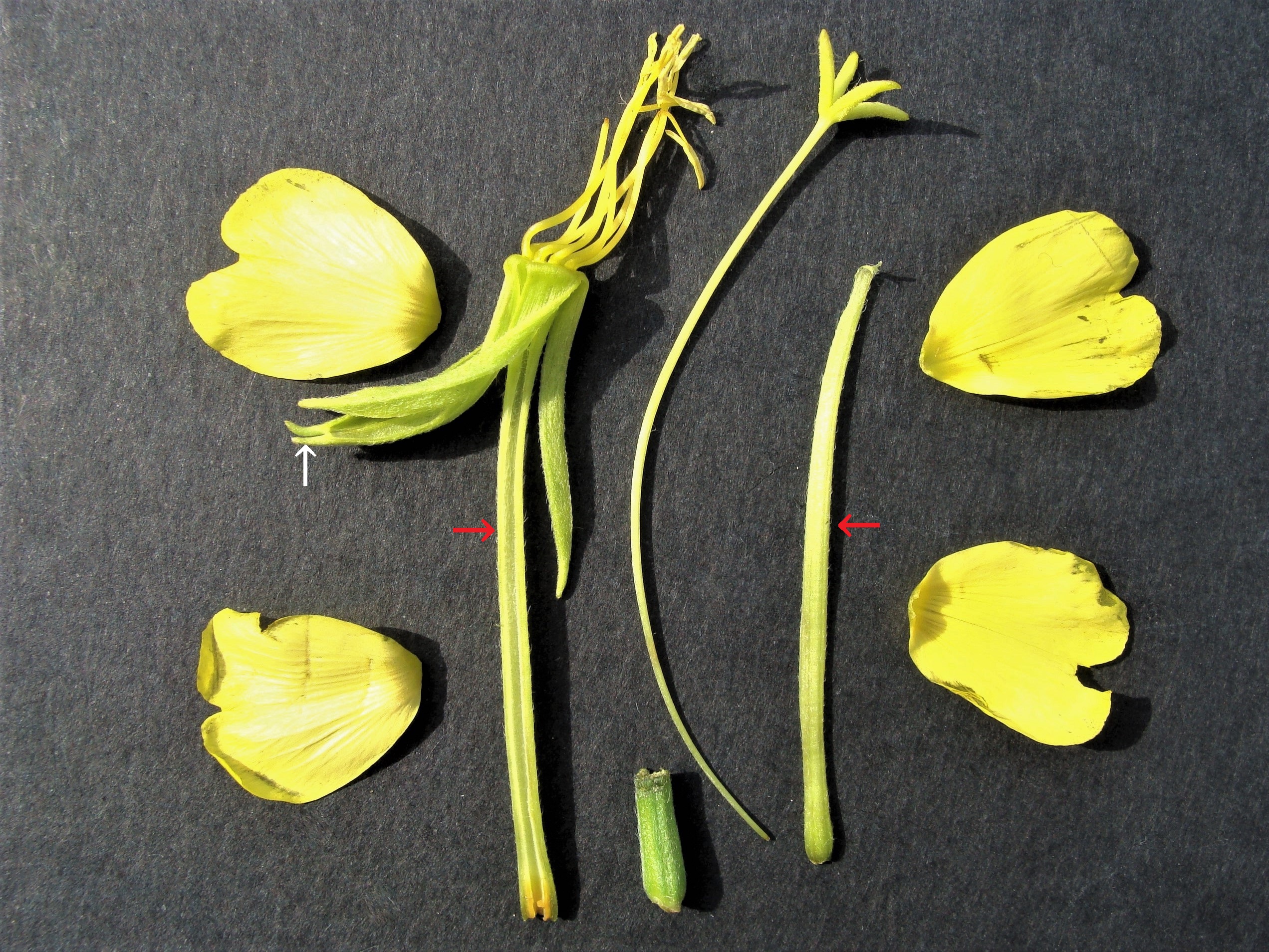

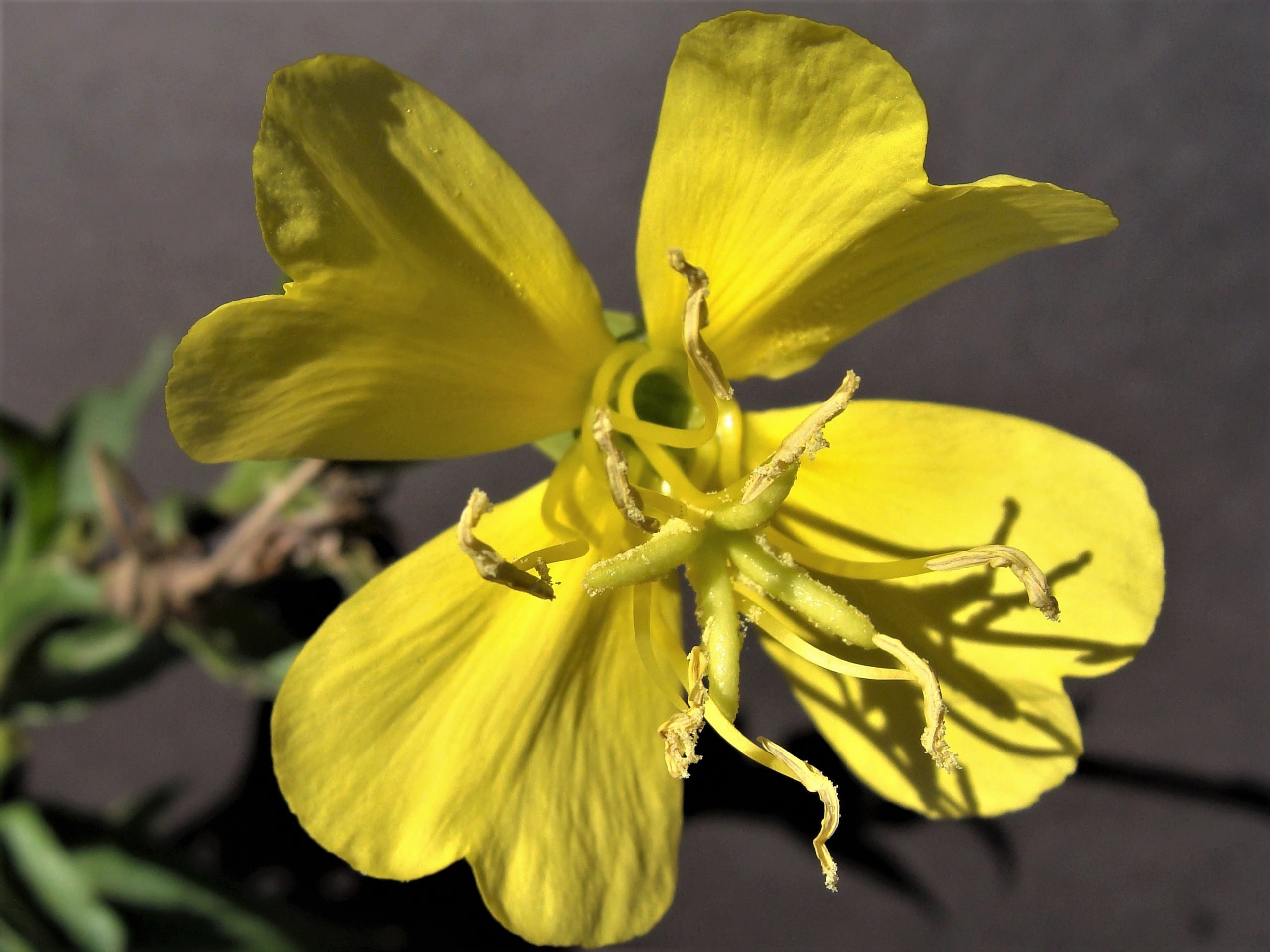
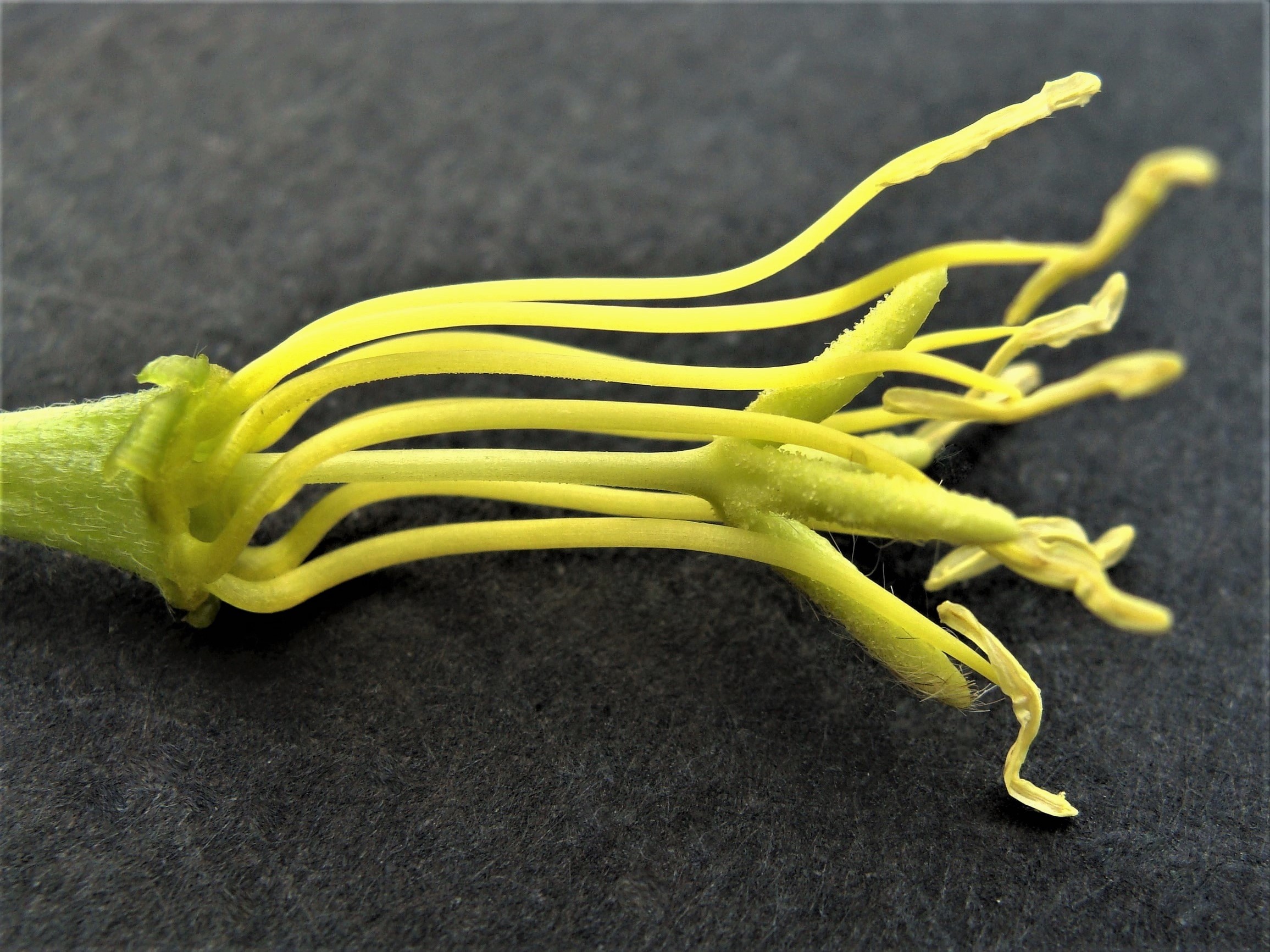
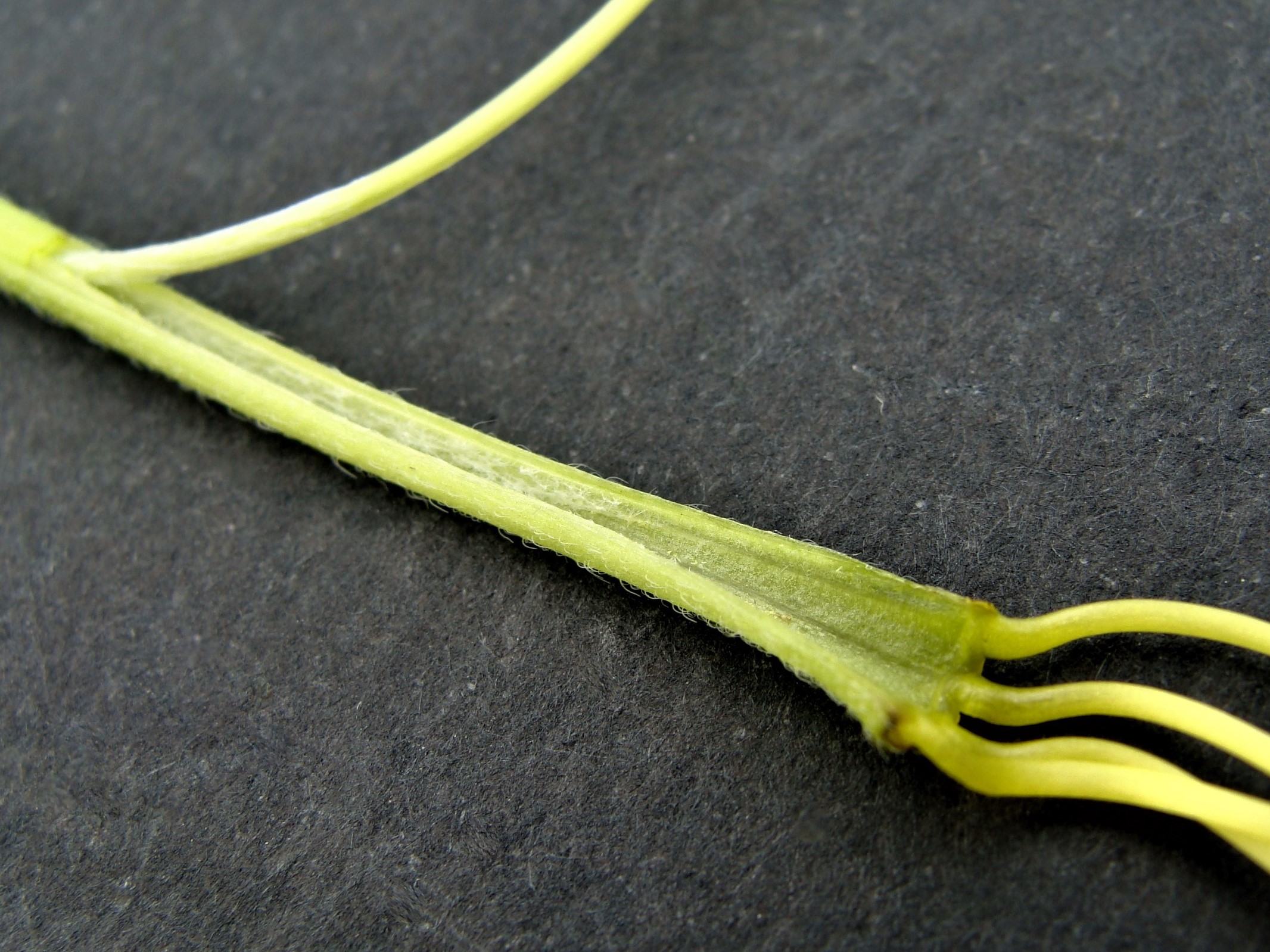
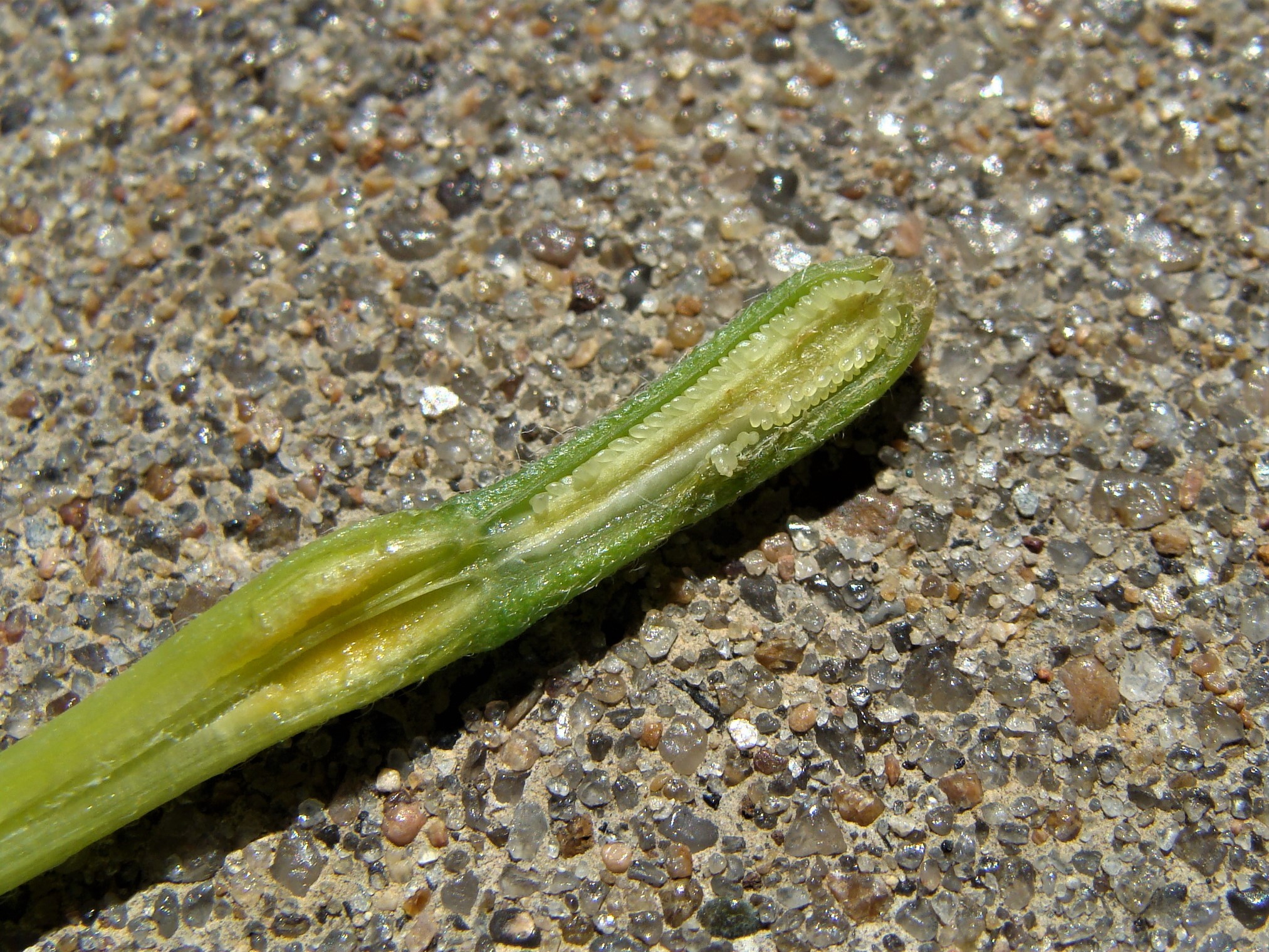
Flowers are fertilized by nectar-seeking moths with long proboscises and small bees and other insects gathering pollen. With the dropping of flowers, the 4-locule ovaries enlarge to become hardened green capsules (to 1+ inch long and 3/16 inch wide). The terete capsules, initially broader at their rounded base, are composed of 4 compartments marked on the exterior by prominent grooves and 2 small-stubby apical knobs. When dry, the now straight-sided capsules split across their apices and separate along their side-margins while remaining attached at their bases. Spikes of uniformly shaped capsules are densely spaced with individual spikes 1+foot long; those of a full plant having a candelabra structure. Seeds are tightly stacked in two rows per compartment so that each capsule may have several hundred seeds. Dead plants and their capsules remain upright so that seeds are gradually dispersed over several months, aided by strong wind. The brown, irregularly shaped seeds have a greatest dimension of about 1/16 inch.

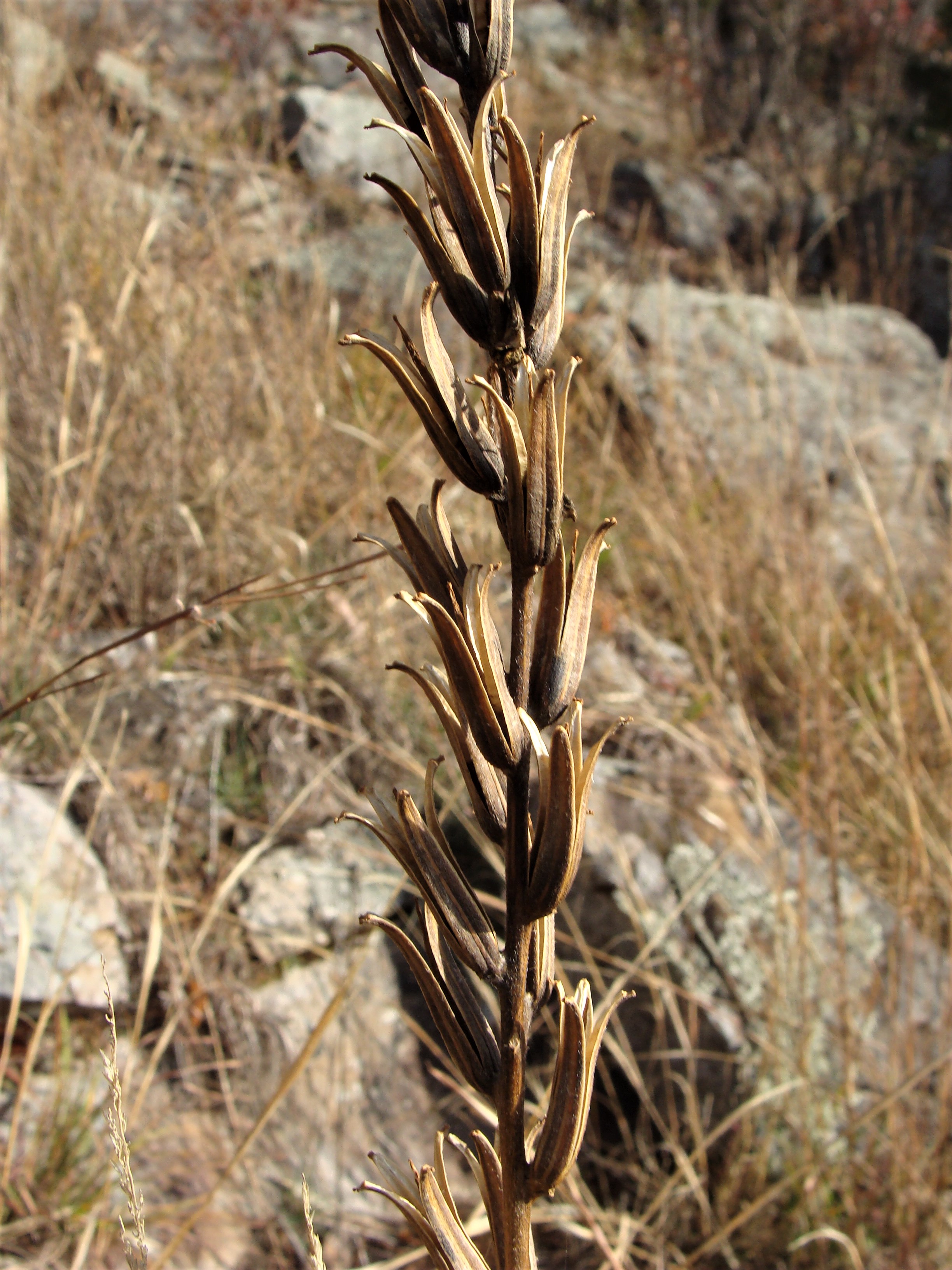
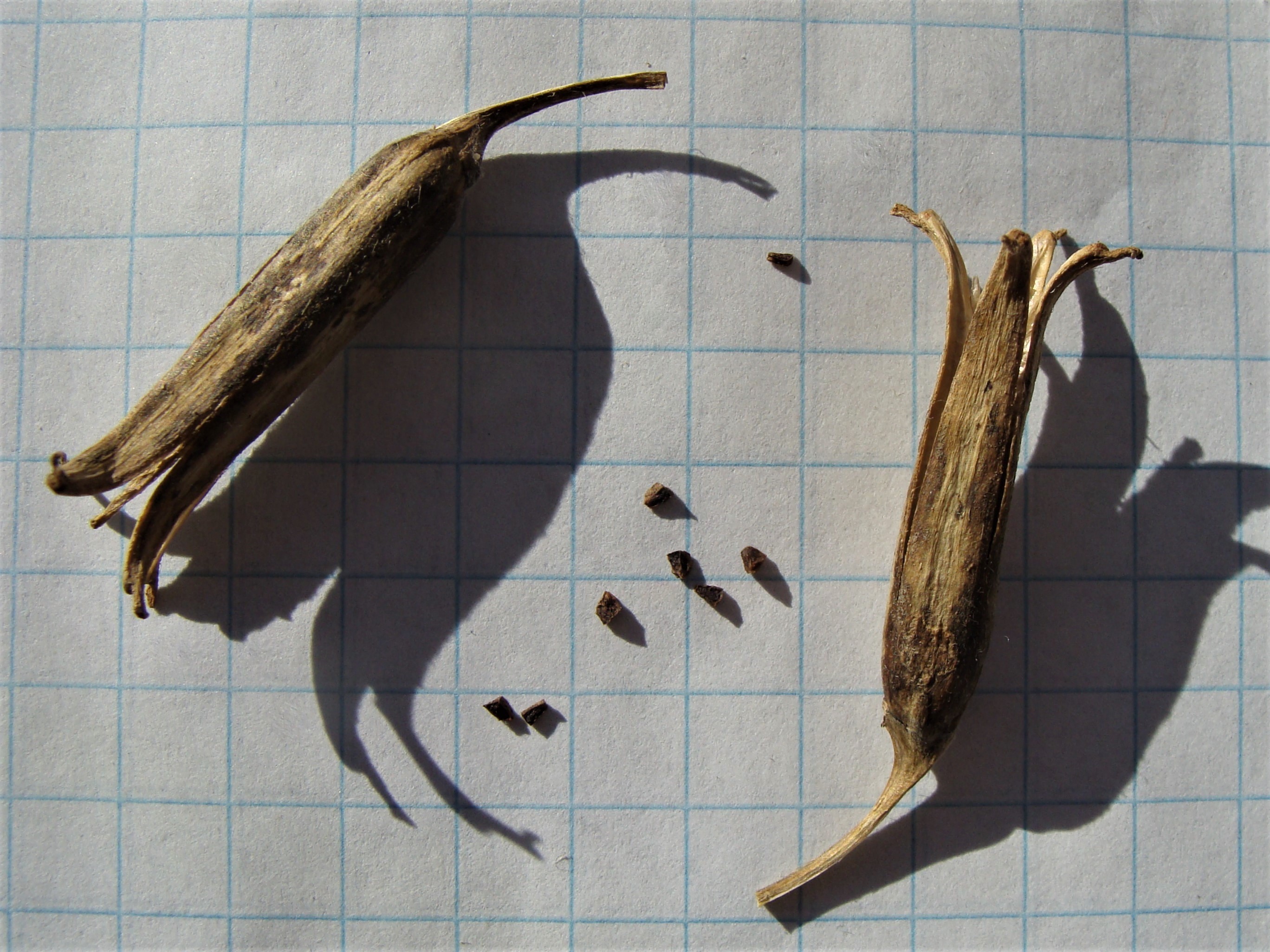
In considering its suitability for a garden, Common Evening Primrose with its large size and bold branching structure, would certainly stand out. Due to its propensity to self-seed, for a more formal or small garden, removal of fruited spikes may be necessary. Probably best suited for naturalizing larger spaces. Plants provide pollen, nectar and foliage for moths and insects and seed for birds. Dead fruited spikes work well in dry arrangements. Historically, plants have been used for medicinal and/or food uses, and the species is commercially cultivated for seed oil for medical uses and research. Food uses include boiled roots of biennial plants and foliage and flowers for salads.
At least 17 species or subspecies of the genus (in narrow circumscription; not including members of Gaura and Stenosiphon which are sometimes included) are reported in Arkansas. Other than Showy Evening Primrose (O. speciosa), all other species in the state (again, under narrow circumscription) have yellow flowers. Of the tall, yellow-flowered species, Common Evening Primrose has size and leaf-shape similar to the native Hairy Evening Primrose (O. villosa subp. villosa). Common Evening Primrose can be distinguished by being variously hairy with a dense mix of long hairs, hairs with reddish glandular bases and minute appressed hairs, as well as by green or yellowish sepals. Hairy Evening Primrose is densely and uniformly pubescent with minute appressed hairs and has red striped or flushed red sepals. A non-native, tall species of similar appearance, reported from Pulaski County, is Garden Evening (aka Large Flower and Red Sepal) Primrose (O. glazioviana) – distinguished by its distinctly red sepals and larger flowers.
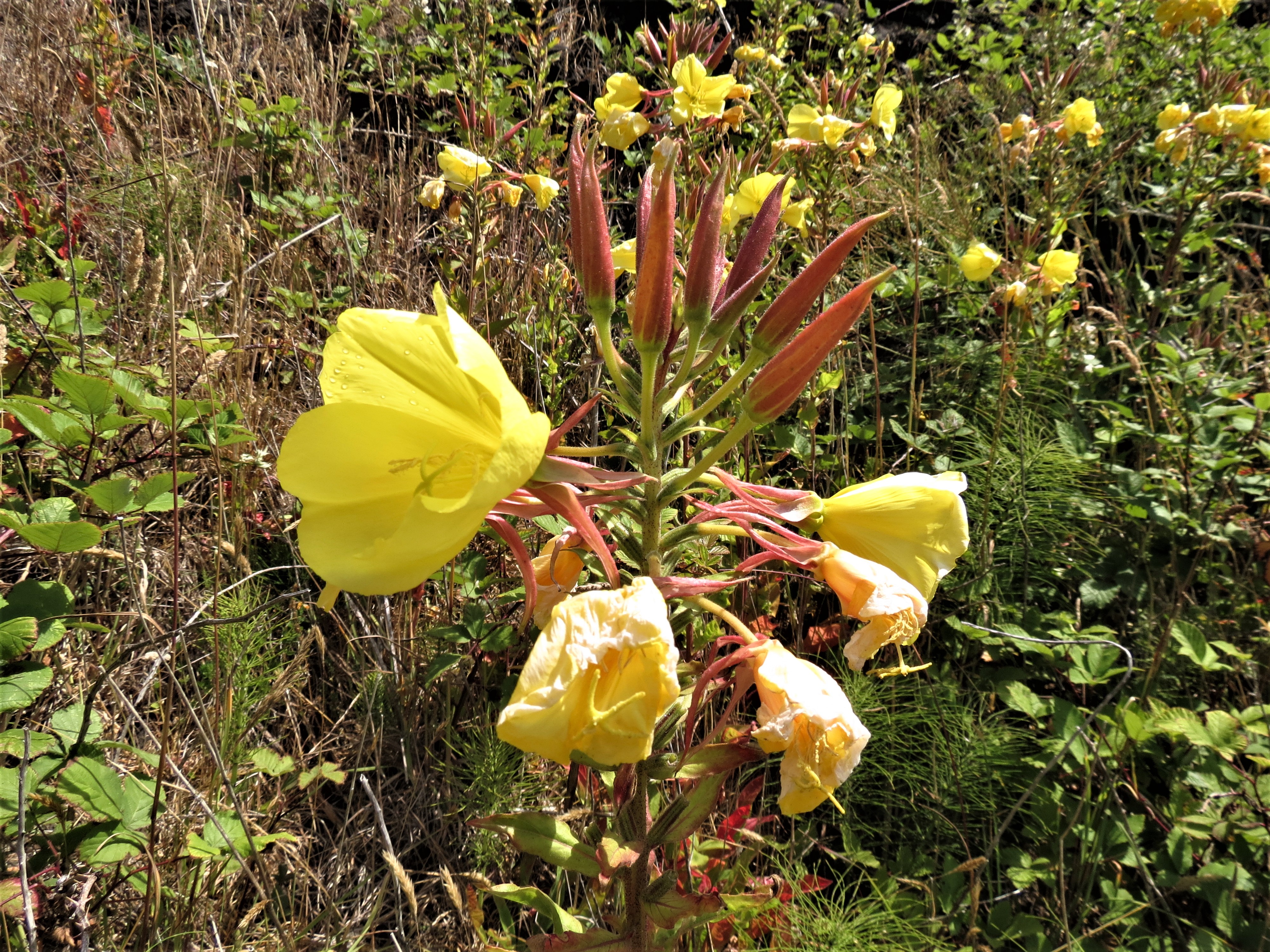
Another member of the genus that has been previously addressed in this series of articles is Sundrops (O. fruticosa).
*The branched taproot of a winter-annual is shown in Photo 2. For images of the carrot-like taproots of biennials, query “Oenothera biennis + roots + images”.
Article and photographs by ANPS member Sid Vogelpohl
